PNWPHS
Copyright © 2024 by the Pacific Northwest Postal History Society · All rights reserved
Idaho
Southern Idaho was crossed by the Oregon Trail in the 1840s, and northern Idaho was traversed by the Mullan Road in 1854, but Idaho was a land to get across, and little settlement occurred before 1860. There was a military presence at Fort Hall and Fort Boise. Miners returning from Canada’s Caribou gold rush discovered ore in the mountains north of the Salmon River in August 1861, and suddenly there was a influx of miners and a handful of towns were established, including Lewiston. Additional ore discoveries in the Owyhee Mountains of southwestern Idaho created Silver City and another cluster of population, and because of these mines and other mining around Hailey and Rocky Bar, Boise City emerged as a major supply point. At first the area that is now Idaho was attached to Oregon Territory, then divided between Oregon and Washington Territories, and then to Washington Territory when Oregon became a state in 1859. In 1863 Idaho Territory was created with Boise City the capital; Statehood was not achieved until 1890. Boise City shortened its name to Boise in 1896.
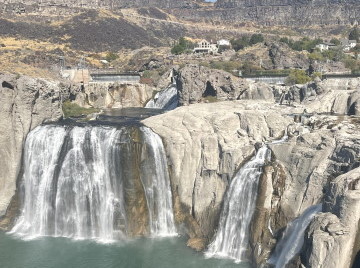
Much of the economy of early Idaho was based on mining. Many of the early mining communities were served by Express companies. Mossman & Miller ran an Express from Lewiston to Florence; the Miller was young Joaquin Miller, who later became renowned as the “Poet of the Sierras.” Agriculture became increasingly important, and when a massive irrigation project built around 1900 supplied water from the Snake River, the plains southern Idaho filled up with farming communities. Twin Falls post office was established in 1904 and quickly became an important supply center, calling itself the “Magic City” because it seemingly appeared overnight. A large chunk of central Idaho is wilderness, some of it really rugged country. Northern and southern Idaho are connected by one highway, but there has never been a railroad within the state to do so.
Selected Idaho Covers
Hailey became the principal town of the Wood River district when it boomed in 1880. The town was originally in Alturas County but became the county seat of Blaine County when Alturas County was divided. The return address on this territorial cover tells us that by 1885 Hailey had a daily and weekly newspaper, the Times. The post office was established March 21, 1881 and is still operating.
Courtesy of Alan Patera.
Courtesy of Alan Patera.
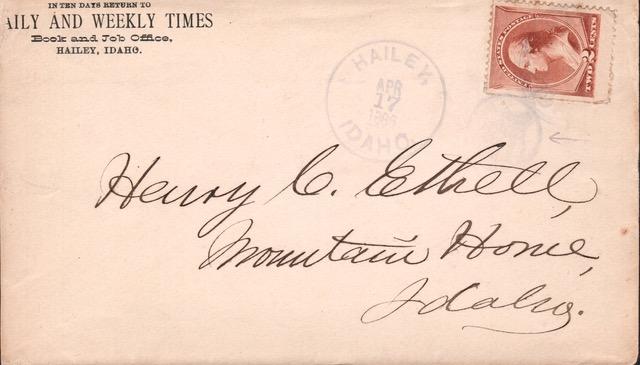
Atlanta was located in a basin at the headwaters of the Middle Boise River after gold was discovered in 1863, despite its remoteness. It had two mills by October 1866 and the post office of Atlanta City was established December 27, 1867. The name was shortened to Atlanta August 3, 1870. Except for a two-week interruption in 1880, Atlanta retained a postal facility until 2008. The interesting thing about this territorial cover with its beautiful postmark and star-in-circle killer is that it proclaims Atlanta to be in Alturas County. Idaho no longer has an Alturas County, which was divided up, landing Atlanta in Elmore County.
Courtesy of Alan Patera.
Courtesy of Alan Patera.
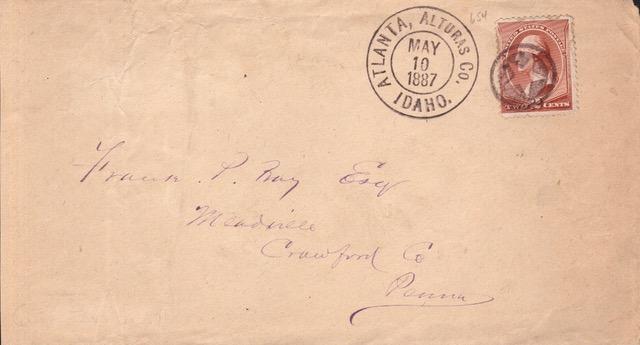
While Silver City was the big town of this area in Owyhee County, six miles down Jordan Creek silver was discovered in 1874. In 1886 Joseph R. Delamar, rich from his mines at Delamar, Nevada, purchased the property and erected a mill. The town of Delamar developed along the one road that followed the stream. The post office was established August 6, 1889 and discontinued December 15, 1942.
Courtesy of Alan Patera.
Courtesy of Alan Patera.
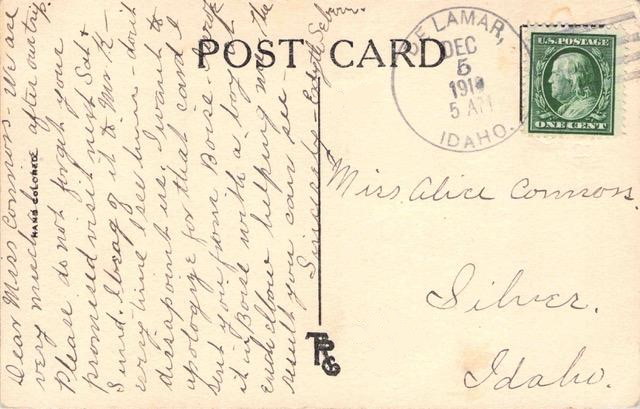
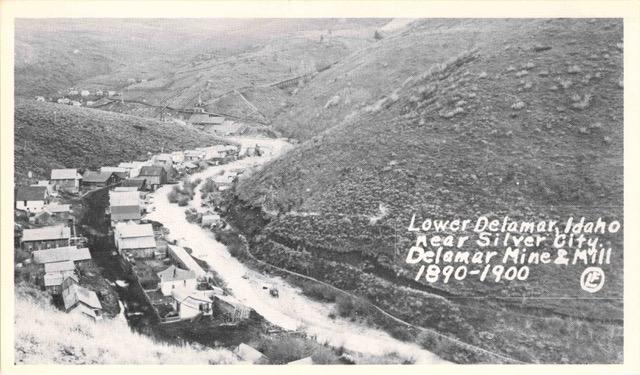
Nicholia was established in southern Lemhi County on the east side of Birch Creek Valley at the western base of the Bitterroot Range dividing Idaho and Montana. Nicholia was the site of a smelter for the Viola mine. The smelter only operated until 1889, but the community lingered and had the post office re-established during a mining revival in the 1930s. The post office was established February 8, 1884, discontinued December 15, 1916, re-established June 25, 1930, and discontinued November 30, 1937. This 4-bar cancel dates from the first period of operation.
Courtesy of Alan Patera.
Courtesy of Alan Patera.
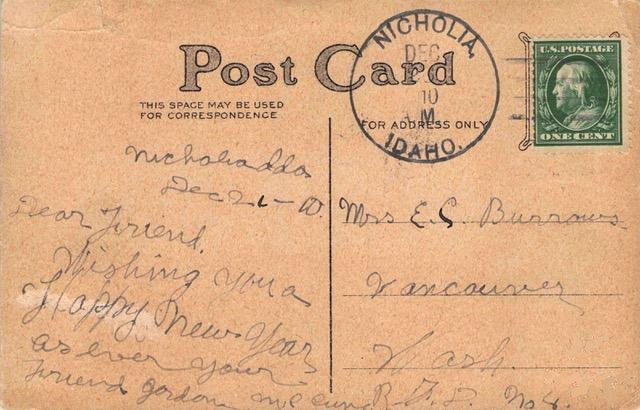
Meyers Cove is truly remote. It is in the Salmon River Mountains on Camas Creek, over a divide at the end of the Silver Creek Road, some 25 gravel road miles from the nearest store, on the border of the River of No Return Wilderness Area. It is situated just below Mine Mountain, which is why it was there. This cover was postmarked August 14, 1916 and is addressed to the county seat at Salmon. The post office was established January 9, 1906 and discontinued February 15, 1940.
Courtesy of Alan Patera.
Courtesy of Alan Patera.
